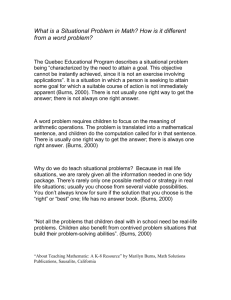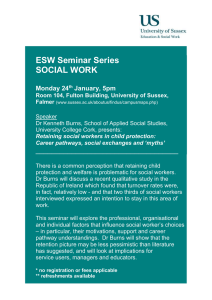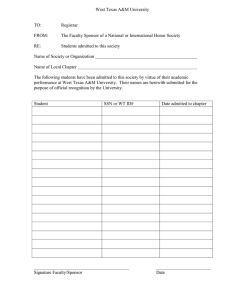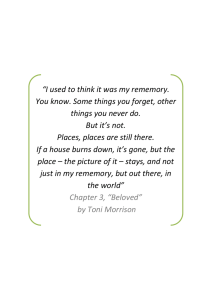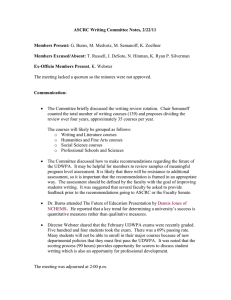1. A surgeon removed a section of tissue along a... two names would the section be called?
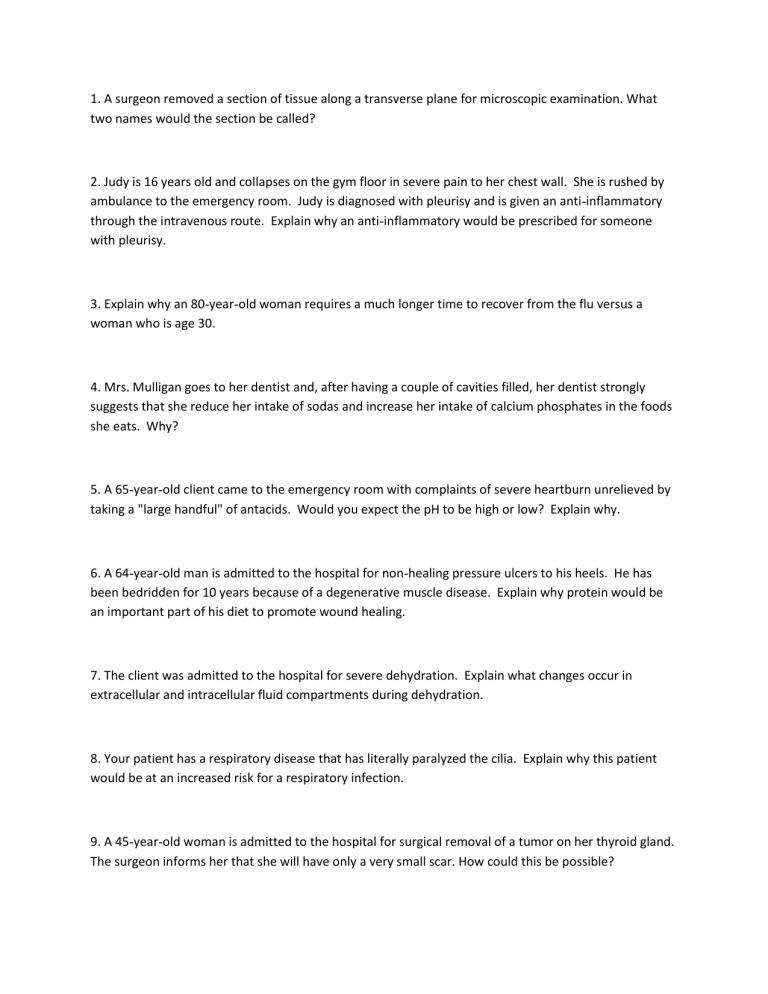
1. A surgeon removed a section of tissue along a transverse plane for microscopic examination. What two names would the section be called?
2. Judy is 16 years old and collapses on the gym floor in severe pain to her chest wall. She is rushed by ambulance to the emergency room. Judy is diagnosed with pleurisy and is given an anti inflammatory through the intravenous route. Explain why an anti inflammatory would be prescribed for someone with pleurisy.
3. Explain why an 80 year old woman requires a much longer time to recover from the flu versus a woman who is age 30.
4. Mrs. Mulligan goes to her dentist and, after having a couple of cavities filled, her dentist strongly suggests that she reduce her intake of sodas and increase her intake of calcium phosphates in the foods she eats. Why?
5. A 65 year old client came to the emergency room with complaints of severe heartburn unrelieved by taking a "large handful" of antacids. Would you expect the pH to be high or low? Explain why.
6. A 64 year old man is admitted to the hospital for non healing pressure ulcers to his heels. He has been bedridden for 10 years because of a degenerative muscle disease. Explain why protein would be an important part of his diet to promote wound healing.
7. The client was admitted to the hospital for severe dehydration. Explain what changes occur in extracellular and intracellular fluid compartments during dehydration.
8. Your patient has a respiratory disease that has literally paralyzed the cilia. Explain why this patient would be at an increased risk for a respiratory infection.
9. A 45 year old woman is admitted to the hospital for surgical removal of a tumor on her thyroid gland.
The surgeon informs her that she will have only a very small scar. How could this be possible?
10. In adult humans, most cancers are carcinomas or adenocarcinomas. These include cancers of the skin, lung, colon, breast, and prostate. Which of the four basic tissue types is involved? Why do you think this is so?
11. Explain why an infection may occur in a tissue injury.
12. We are told that every surface we touch is teeming with bacterial cells, and bacteria are found in the pools we swim in, the water we wash with, and on the hands of friends. Why are we not inundated with bacterial infections on our skin?
13. The temperature yesterday was an uncomfortable 98° F. You unwisely chose to play tennis at noon, counting on your body's internal defenses to protect you against heat exhaustion. How did your body respond to this distress?
14. The Waldorf family was caught in a fire but escaped. Unfortunately, the father and daughter suffered burns. The father had second degree burns on his chest, abdomen, and both arms, and third degree burns on his entire left lower extremity. The daughter suffered first degree burns on her head and neck and second degree burns on both lower extremities. a. What percentage of the father's body was covered by burns? b. What percentage of the daughter's body received first degree burns? c. What part of the daughter's body has both the dermis and epidermis involved? d. The father experiences a good deal of pain in the area of the chest and abdomen, but little pain in the leg. Why?
15. Multiple sclerosis (MS) is a disease in which the myelin sheaths are destroyed. What process does this interfere with and what would be the consequence?
16. A client was admitted for depression. What should the nurse explain to the client regarding the role of serotonin and depression?
17. A patient was admitted to the rehabilitation unit five days after having a stroke. The nurse assesses his muscle strength and determines that he has right sided weakness. Based on this assessment data, what part of the brain was injured?
18. An 86 year old patient with Alzheimer's disease was admitted to the hospital with dehydration. Her daughter states that her mother has been very confused and combative lately. Explain why the patient developed dehydration.
19. The location and arrangement of the arteries supplying the hippocampus make it particularly vulnerable to injury. How would memory be affected if the hippocampus suffered deterioration?
